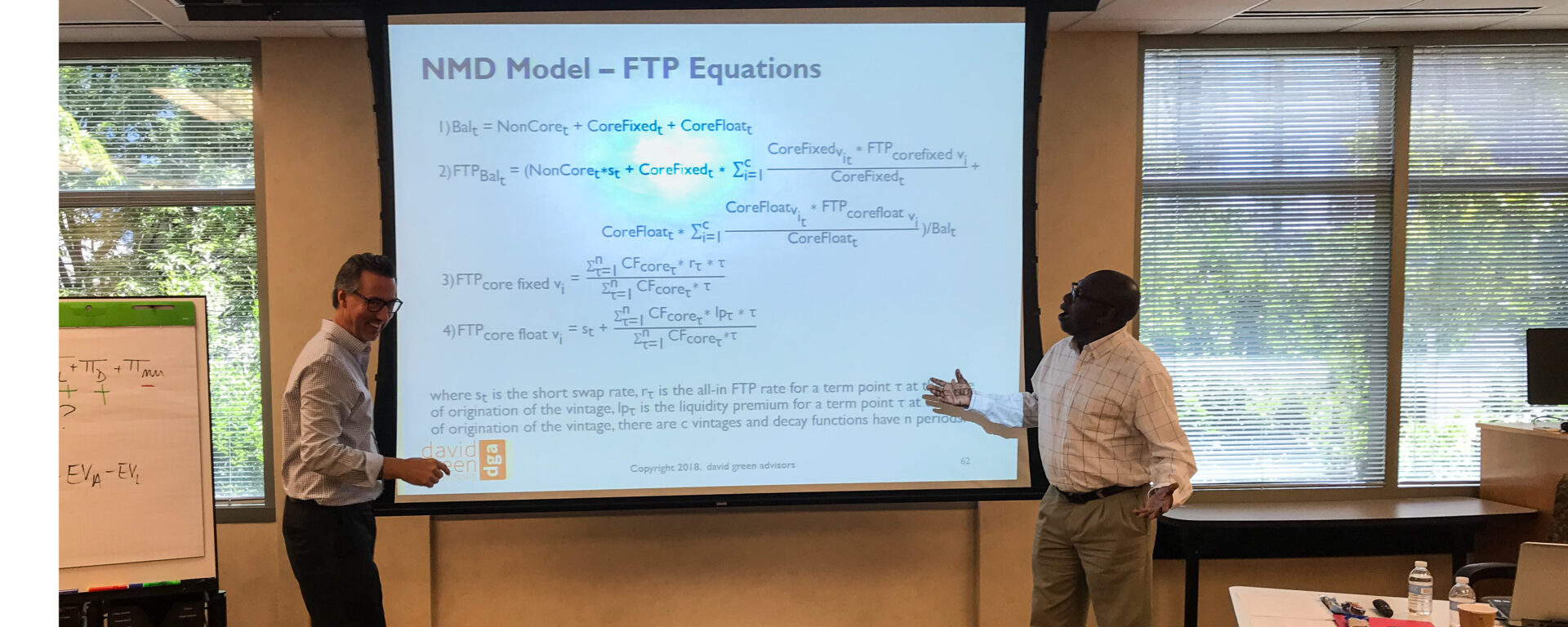
NMD Workshop – Atlanta – July 2018
I want to thank everyone who attended my NMD workshop in Atlanta which was organized by Marcus Evans – I think it was the best session yet on the subject! (See the testimonial from Elliot Reis , ALM Manager at Alliant Credit Union.) ALM and FTP managers, model risk managers and auditors representing several banks and credit unions from across the country participated in the 2-day event. Following an extensive review of ALM, FTP and strategic balance sheet management (contexts to which deposit model output speaks and contexts with which many young bankers are unfamiliar), I demonstrated my approach to NMD modeling; in addition to strong quantitative elements, model calibrations are informed by almost 25 years of risk and profitability management experience.
In addition to a comprehensive analysis of the drivers of re-pricing and liquidity cash flow dynamics, the NMD Model has its own fully-integrated FTP rate calculator. With the ability to generate FTP rates and spreads which span the entire historical study period as well as multiple pro forma scenarios, the NMD Model output enables institutions to align the treatment of NMDs in both risk AND profitability management domains. With interest rates steadily increasing, it is vital that the product and business segment managers think about the absolute and relative value of deposits in a way that is consistent with their treatment in risk management exercises; without a well-designed FTP methodology, this is simply not possible. Despite this, deposit-related performance incentives at most institutions continue to be purely volume-based, ignoring the fact that VOLUME and VALUE are not the same thing!
Most US banks, if they have not already passed it, are quickly approaching the inflection point where the apparent stickiness and lack of rate sensitivity of their deposits will prove to be ephemeral. Unfortunately, the post-crisis emphasis on purely quantitative approaches to behavioral modeling has a strong tendency to produce backward-looking measures of risk and profitability, blinding many institutions to the inevitable shift in behaviors that occurs when excess market liquidity gets fully consumed. Beyond this inflection point, despite several years of outperforming, balance sheet strategies that are predicated on above-average rates of loan growth will inevitably disappoint given the short supply of low-cost, sticky deposits as well as the bruising competition from the largest national players. If institutions are not careful, subsequent efforts to raise much-needed deposits will only attract hot-money and potentially cannibalize existing deposits. These strategic considerations must be factored into the behavioral assumptions because the risk and profitability management exercises to which they speak are, in fact, forward-looking.
For more information about DGA’s approach to deposit modeling, see www.nmdmodel.com.
Above, after throwing out challenge after challenge, Harry John, Ph.D. from Alliant Credit Union has a moment of epiphany when he finally sees the beauty of the matched-maturity FTP formulas for NMDs.
